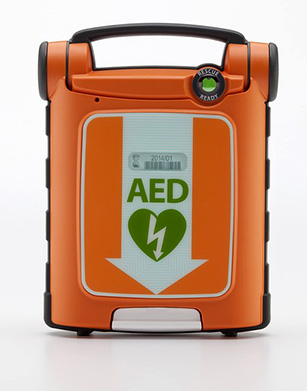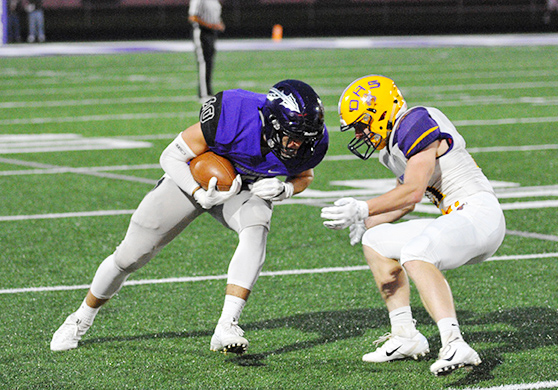SportsMed: Platelet-rich plasma in sports
The potential of platelet-rich plasma (PRP) in the treatment of sports injuries has been increasingly investigated in recent years.
 Chronic tendon injuries and sprained knees appear to respond positively to this type of treatment. Famous athletes such as Rafael Nadal and Tiger Woods have received PRP, despite there being only limited scientific evidence to support its efficacy. Conditions that have typically been addressed with surgery, physical therapy or medications are now being subjected to PRP, and its growing popularity is helped by the testimony of athletes who credit it as having enabled them to return to competition more quickly than they could have with standard treatment modalities. There is no definitive scientific evidence, however, that PRP therapy actually improves the healing process in injuries.
Chronic tendon injuries and sprained knees appear to respond positively to this type of treatment. Famous athletes such as Rafael Nadal and Tiger Woods have received PRP, despite there being only limited scientific evidence to support its efficacy. Conditions that have typically been addressed with surgery, physical therapy or medications are now being subjected to PRP, and its growing popularity is helped by the testimony of athletes who credit it as having enabled them to return to competition more quickly than they could have with standard treatment modalities. There is no definitive scientific evidence, however, that PRP therapy actually improves the healing process in injuries.
Blood typically contains a certain proportion of platelets; PRP is designed to concentrate these platelets, with the hope of increasing its ability to heal an individual. Usually, PRP is five to 10 times richer in growth factors and platelets than regular blood.
The process of wound and soft tissue repair is highly dependent on platelet activation. Various musculoskeletal problems are believed to respond to PRP being introduced in the vicinity of the injured joints, muscles, ligaments or tendons. Ultrasound guidance of the injection of PRP has made targeted application much easier.
In the 1990s, plastic and maxillofacial surgeons started to utilize PRP. Aseptic technique was used to prepare the blood of the patients for use on their own bodies. Reparative cells are known to proliferate and growth factors are known to increase around abnormal tissue when PRP is injected in the vicinity.
Blood drawn from a patient is where the PRP preparation originates. It then undergoes a process involving centrifugation, in which platelets are increased in concentration and separated from the other cells in the patient’s blood sample.
The healing process is potentially accelerated by the presence of PRP due to the increased amount of growth factors in it. However, the studies that demonstrate this are mostly laboratory-based and do not show efficacy in actual athletes. As such, more real-world studies are needed.
 PRP may be administered in various ways, although most commonly it is done by injection. With a heel cord that is painful, inflamed or swollen, the diagnosis of Achilles tendinosis may be made, and PRP can sometimes be a recommended treatment. This condition often occurs in tennis players and runners. Inflamed tissue may be injected with a combination of local anesthesia and PRP, although beneficial effects may not be felt until several weeks after. The pain may even get worse first in the first week or two before it gets better and disappears.
PRP may be administered in various ways, although most commonly it is done by injection. With a heel cord that is painful, inflamed or swollen, the diagnosis of Achilles tendinosis may be made, and PRP can sometimes be a recommended treatment. This condition often occurs in tennis players and runners. Inflamed tissue may be injected with a combination of local anesthesia and PRP, although beneficial effects may not be felt until several weeks after. The pain may even get worse first in the first week or two before it gets better and disappears.
For some patients, PRP is applied after a surgical procedure. A tendon that has been reattached through surgery may also be infused with PRP within the surgical suite, with the hope that the growth factors contained within it will improve healing. PRP can also be prepared in a way that allows it to be stitched within the injured tissues as they are fixed. PRP is thought to be beneficial in shoulder surgery to repair torn rotator cuff tendons. However, the results in most studies so far show little or no benefit when it is used in these types of surgical procedures.
PRP is also being studied in terms of application in torn knee ligaments, especially the anterior cruciate ligament (ACL); the majority of evidence shows little or no benefit from using PRP for ACL tears. PRP has been trialed in a very limited way to speed up the healing of fractures, although, so far, studies have not shown significant benefits.
PRP injections do not specifically need to be ultrasound-guided. Ankle, knee, hip, shoulder, wrist and elbow tendinosis are some of the conditions PRP has been used to treat without ultrasound, and there appears to have been decreased pain and improved function, according to several clinical studies of varying strengths. There are some studies as well that indicate osteoarthritis pain may be improved with PRP. More studies are currently being conducted to determine if this form of treatment might be any more effective than current treatment methods.
Evidence of PRP’s effectiveness is currently strongest in the treatment of tennis elbow, although the overall state of the science still points to little or no effect. However, PRP’s use in tennis elbow continues to grow in popularity. For jumper’s knee or patellar tendinitis, and chronic patellar tendinitis, the evidence points to PRP having the same benefit as standard treatment; clinicians have thus begun offering PRP as an alternative as well.
There are ongoing studies looking more deeply into the use of PRP, but many are coming back with conflicting results. The varying results may be due to the many different ways PRP is applied in practice, and the varying ways that individuals, with their own unique physiological reaction to injuries, respond to PRP. Some of the current ongoing studies are looking into the difference of PRP’s effect when the injury is due to an ongoing condition versus its effect when it is applied to an injury that is acute and suddenly incurred. Other studies are looking into the effect of PRP in relation to the overall health of the patients on which it is being used. The variations of effects in relation to the areas being treated with PRP are also continually being looked at and reexamined.
The promise of PRP is there, it seems, even though current research studies do not support its burgeoning use in sports medicine. Although the majority of studies show little to no effect, the medical community has so far chosen two routes: Offer PRP hoping it will work, or hold off on PRP in the hope that studies will lead to clearer guidance on its use and criteria for its administration.
It’s very important that people hoping to either use or receive PRP treatments remember that there are many unknowns regarding the technique. For one, the specifics of PRP application that actually lead to the improvement in an injury need to be laid down. Which conditions respond best to PRP treatment, and to what degrees, need to be studied further. The mechanisms by which PRP treatment works need to be further elucidated, and the composition of the PRP preparations need to be standardized on a per-injury basis.
SportsMed appears regularly in Coach & Athletic Director magazine, offering tips on athlete health and injury prevention.
References
Ehrenfest DMD, Andia I, Zumstein MA, et al. Classification of platelet concentrates (platelet-rich plasma-PRP, platelet-rich fibrin-PRF) for topical and infiltrative use in orthopedic and sports medicine: current consensus, clinical implications and perspectives. Musc Lig Tend J, 2014;4(1):3-9.
Fiorentino S, Roffi A, Filardo G, et al. European definitions, current use, and EMA stance of platelet-rich plasma in sports medicine. Journal Knee Surg, 2015;28(1):51-54.
Mishra A, Harmon K, Woodall J, et al. Sports medicine applications of platelet rich plasma. Curr Pharm Biotech, 2012;13(7):1185-1195.





